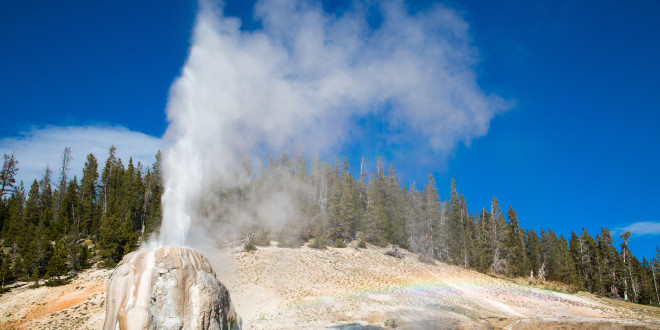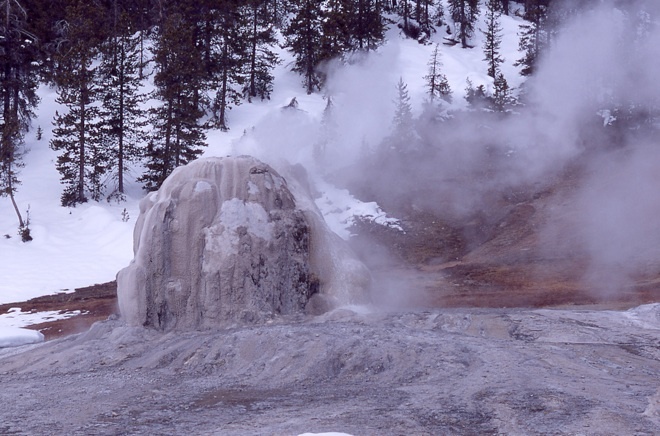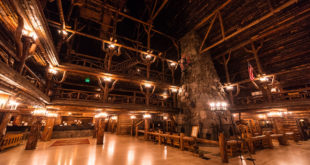In our experience, the most popular geysers in Yellowstone National Park tend to be the most predictable ones.
This makes sense. We want our attractions to be reliable and regular. It’s why Old Faithful Geyser is revered. Yes, it’s glorious and tall, but that would mean nothing if it weren’t, well, faithful. It goes off when promised, give or take ten minutes.
We also want our attractions, big and small like, to be close together. Yellowstone’s visitor infrastructure is laid out in such a way that it’s relatively easy to see every geyser, fumarole, hot spring, and paint pot in the Park.
There are, of course, outliers. Geysers off the beaten track, tucked away from immediate view. Features of lasting value and interest you may have to hike to in order to get a glimpse. And while some are far flung, like the features in Shoshone Geyser Basin, others are manageably close to the main drag.
One such feature is Lone Star Geyser.
A cone of almost marmoreal white—in reality, it’s geyserite—Lone Star Geyser stands 12-feet tall and erupts in plumes attaining nearly 45 feet in height. Its eruptions can be predicted with reasonable accuracy: Lone Star Geyser goes off roughly every three hours.
Even if it’s not erupting, Lone Star and its surroundings make for some fantastic scenery. All things considered, had it cropped up closer to the Upper Geyser Basin, it would probably be a beloved attraction. And while it’s not wholly obscure, it doesn’t get as much foot traffic as comparable features. As it stands, it sits all alone, flanked by stands of spruce-fir, the ground around it blanched.
In terms of accessibility, Lone Star Geyser is actually quite easy to reach. There are two paths you can take: the Howard Eaton Trail and the Lone Star Trail.
The first trailhead is found just off the road near the Old Faithful area, on the way toward West Thumb. It’s a moderately difficult trail that takes you uphill then through a forest, but at 5.8 miles round trip it’s not terribly long.
Lone Star Trail, on the other hand, begins near the Kepler Cascades pullout. It’s an easier trail to find and follow, as it leads along the Firehole River, on an old service road. It’s also only 4.8 miles round trip. You can even bike most of the way, although you can’t (and shouldn’t) bike all the way up to the geyser.
What trail you take to Lone Star Geyser depends on how much you want to hike and what you want to see along the way. As always, follow backcountry protocol and exercise caution when hiking.
In addition, if you do make the trek and you see Lone Star Geyser erupt, mark it down in the logbook kept there. For the benefit of who comes after you.
 Yellowstone Insider Your Complete Guide to America's First National Park
Yellowstone Insider Your Complete Guide to America's First National Park







You must be logged in to post a comment.